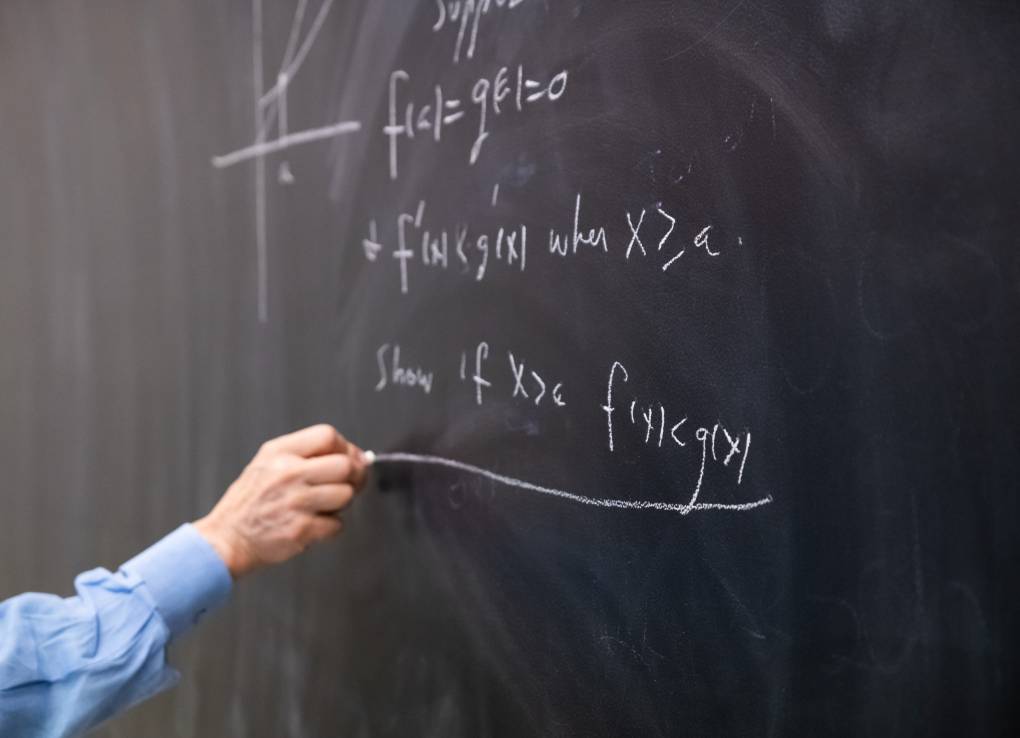Meanwhile, the ordinary students seemed to be unharmed. Those randomly assigned to the new mixed-level class had test scores in 11th grade that were no worse than those who took Algebra 1 separately.
Some advocates of this trend argue that everyone benefits from mixed-ability classes, but there was no increase in test scores for high-achieving students in this experiment. The vast majority of students would have been assigned to mixed-ability classes for Algebra 1 anyway, and relatively few were low achievers. The researchers said there may be a point at which the concentration of students with low grades becomes so high that it negatively affects their peers.
Among the underclassmen and regular Algebra 1 students, there was a middle group of students who scored just below the cutoff for placement in Algebra 1 and were traditionally assigned to a double dose of algebra in ninth grade. The results were even more ambiguous for these students, whose instructional time was cut in half by being given just one dose of algebra in a hybrid classroom. They were less likely to pass geometry in 10th grade, but appeared to fare no worse later in 11th grade. “One explanation is that this has been a very successful experience for most students, but if you pair it with more instructional time, it will be more effective,” Hoffaker said. It would also be more expensive, she said.
The Sequoia Union High School District, where this experiment took place, educates a wide range of students. They include affluent neighborhoods in Redwood City, Menlo Park, East Palo Alto, and low-income neighborhoods. Nearly a third of students in the district are poor enough to qualify for the federal subsidized lunch program, and 15 percent of them are classified as English language learners. Nearly half of the students are Hispanic, 11% are Asian, and one-third are white.
This experiment did not include more advanced students who had already taken algebra in eighth grade or earlier. More than a third of the 2,000 ninth graders continued to be taught in separate classes for geometry or Algebra 2. A small number of highly accelerated freshmen were in pre-calculus.
This enabled this limited experiment to avoid the societal uproar that had swept San Francisco, where advanced students were barred from taking eighth-grade algebra and everyone was placed in the same ninth-grade math class.
This study shows that there are smaller things schools can do between the two extremes of forcing all students into advanced coursework or barring any students from enrolling, said Tom Dee, a professor of education at Stanford University who conducted the mathematics study with his former graduate student Huffaker. Advanced courses. Advanced coursework in the name of justice. “If we speed everyone up, it could be detrimental to kids who aren’t quite ready for that acceleration,” Dee said. “If we slow everyone down, it could be detrimental to the achievement of high-performing kids and put a limit on the kinds of things they might do.”
“But it’s not the only arrow in our quiver,” Dee said.
Dee stressed that this was just one group of students in one school district and that the findings would need to be replicated elsewhere before he recommended eliminating remedial mathematics in high school as national policy.
Inside the classroom
It is difficult to know what might be the key to success in this experiment. It is possible that half of the remedial students never needed remediation and were incorrectly placed because of their middle school math grades. At the same time, the district has changed the way it teaches in these mixed-ability classes and those changes could be what made the difference. Perhaps better teachers would volunteer to teach them. These teachers received additional training and were given an additional period outside of teaching each day.
The school dealt with mixed abilities in an unusual way. Instead of differentiating instruction by giving different practice problems to different students, a common practice in U.S. classrooms, teachers were trained to give the same problems to all students. Victoria Day, director of professional development and curriculum at Sequoia Union, told me that the district chose open-ended word problems that even a low-skilled student could try, but that also posed a challenge for stronger students. (This can be likened to a game with simple rules, such as Othello, which is still a challenge for expert players.) The “low floor, high ceiling” problems were chosen to complement the district’s curriculum, which emphasized procedural fluency, Day said. And accounts.
Classroom mathematics discussions took center stage so students could discuss each other’s analysis. In one exercise, students each wrote down their conclusions and revised them several times. “It’s great because any kid can start this and get better,” Day said.
To save time for problem solving and discussion, teachers have simplified the curriculum to emphasize key concepts. This means cutting some algebra topics. Teachers made their own decisions about how to weave in the review of middle school concepts students needed in algebra. Day described this revision as occurring briefly on a “just in time” basis, rather than a reteaching of an entire unit.
Today, remedial mathematics has been eliminated at the district’s flagship high schools, and almost all students are in ninth-grade algebra or a more advanced class, with the exception of students with severe disabilities. Abolishing remedial mathematics does not solve everything. Many struggling students still fail the subject and need more help. This does not diminish the huge disparities in mathematics achievement within school buildings. But it may help a large swath of children who are falling behind, and that’s especially important after the pandemic when more teens are falling woefully behind in math.
